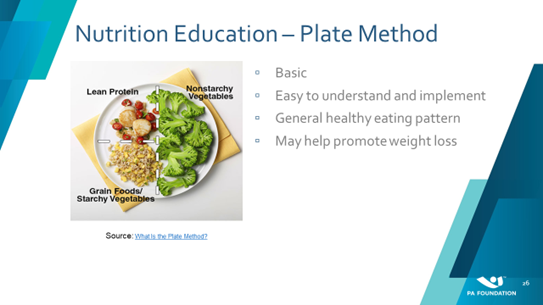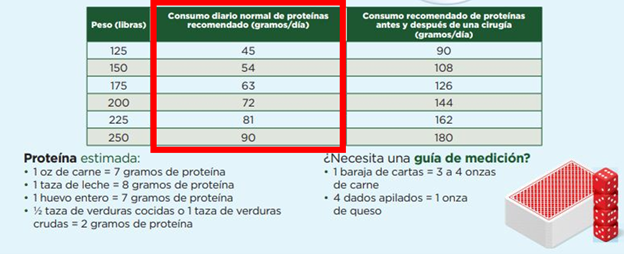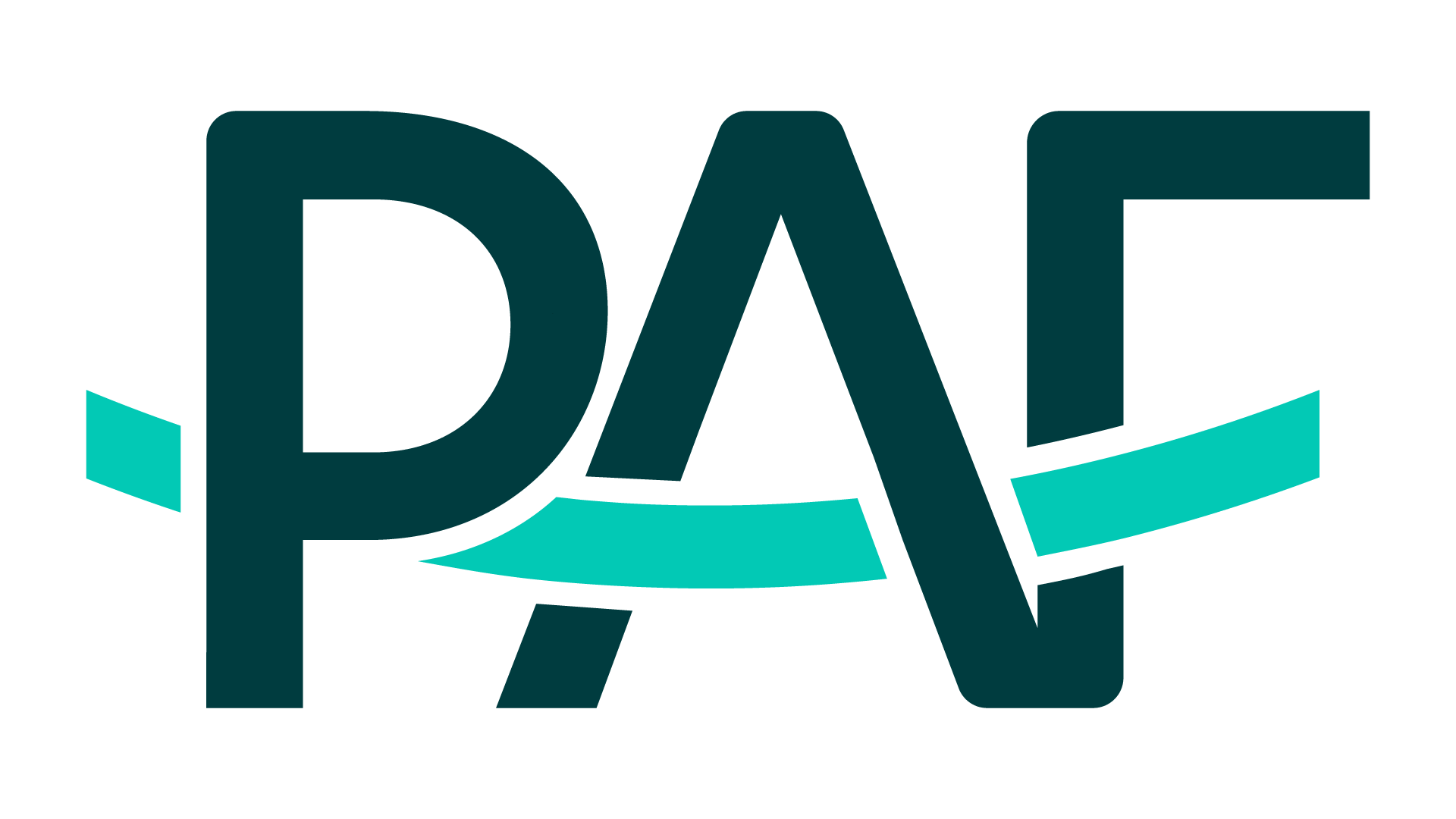Resources Help Spanish-Speaking Patients Make Positive Nutrition Choices
Damaris Rosado, MS, MPAS, PA-C
January 7, 2022

Recognizing that over 41 million people – about 13 percent of the U.S. population – speak Spanish at home1, the PA Foundation developed Spanish language resources as part of its Nutrition Outreach Fellowship program, supported by Abbott. The program includes community presentations, videos, and patient handouts in English and Spanish to help providers educate patients on nutrition and its impact on aging, diabetes, and the role of nutrition before and after surgery. As a Nutrition Outreach Fellow, I have had the opportunity to use these resources and want to share how they are beneficial for providers who are providing care to Spanish-speaking patients.
Treating Spanish-speaking patients with type 2 diabetes can be a challenge. It is well documented that people of Hispanic heritage have a genetic susceptibility to obesity and higher insulin resistance2. And of course, the foods patients choose to eat have a marked impact on blood sugar control. The PA Foundation developed a one-page patient handout with concise information about type 2 diabetes, including tips on nutrition and managing type 2 diabetes as well as guidance on how to employ the plate method, a visual tool to help people create well-balanced meals.
When teaching patients the plate method, it can be beneficial to have a 9-inch plate in clinic to help patients visualize a plate size that can aid in decreasing portion sizes. It can also be helpful to provide patients a list of food choices that cover each of the sections of the plate method, and include examples that reflect their cultural customs. The plate method outlines the following breakdown: one-fourth plate protein (lean protein), one-fourth plate grains and/or starchy vegetables, and one-half plate non-starchy vegetables (see Figure 1).
Common non-starchy vegetables patients can integrate into their diet include asparagus, artichokes, bean sprouts, broccoli, cauliflower, chayote, cabbage, carrots, cucumbers, celery, jicama, mushrooms, bell peppers, and salad greens, just to name a few. Common starchy vegetables include corn, winter squash, potatoes, and legumes (including lentils, beans, and peas)3. It can be particularly helpful to focus on foods that play a prominent role in a patient’s current diet and explain how they fit into the plate method. For example, if a patient eats black beans as part of many of their meals, show them how beans fit into the recommended plate breakdown.
Further food choice examples can be found at the ADA and CDC references listed below. The plate method can be used in combination with more detailed examples of food options from the American Diabetes Association3 and carbohydrate choices from the Centers for Disease Control and Prevention4. The CDC website carbohydrate choice list has an option to be translated into Spanish.
Of course, patient care extends beyond chronic disease management. The PA Foundation also created a one-page handout, “Foods to Help You Bounce Back after Surgery,” to assist providers with patients who are scheduled for surgery. Also available in English and Spanish, this handout educates patients on recommended intake of protein before and after surgery, as well as provides information on recommended normal daily protein intake. In addition, it includes examples of food proteins and how to estimate protein portion size based on common measuring guides.
When discussing the plate method and protein consumption, having a deck of cards, dice, and measuring cups in clinic is an effective way to show patients appropriate portion sizes in contrast to portion sizes they may currently be consuming. Daily recommended dietary allowance (RDA) of protein intake for most adults is roughly 0.8 grams of protein per kilogram. If you are interested in learning more about protein intake for surgery, view an article written by one of my Nutrition Outreach Fellow colleagues, Nicole Fox, MPAS, PA-C.
Nutrition can be a powerful tool to help improve patient outcomes. By having hands-on materials ready in clinic, providers can offer patients clear, effective examples of how to use nutrition to prevent or manage disease and to support wound or surgical healing.
Please find links to the Spanish language materials here:
- Envejecimiento Saludable (English: Healthy Aging)
- Alimentos Que Le Ayudan a Recuperarse Después De La Cirugía (English: Foods to Help You Bounce Back After Surgery)
- Nutrición Para La Diabetes Tipo 2 (English: Nutrition for Type 2 Diabetes)
Figure 1

Figure 2

References
- United States Census Bureau. [online] Available at: https://data.census.gov/cedsci/table?q=%22spanish%20at%20home%22&tid=ACSST1Y2019.S1601&hidePreview=false [Accessed 6 January 2022]
- Aguayo-Mazzucato, Cristina et al. “Understanding the growing epidemic of type 2 diabetes in the Hispanic population living in the United States.” [online] Available at: <https://www.ncbi.nlm.nih.gov/pmc/articles/PMC6953173/> [Accessed 6 January 2022]
- Intechnic, h., 2022. What is the Diabetes Plate Method? [online] Diabetes Food Hub. Available at: <https://www.diabetesfoodhub.org/articles/what-is-the-diabetes-plate-method.html> [Accessed 3 January 2022].
- gov. 2022. Carbohydrate Choice Lists. [online] Available at: <https://www.cdc.gov/diabetes/managing/eat-well/diabetes-and-carbs/carbohydrate-choice-lists.html> [Accessed 3 January 2022].

